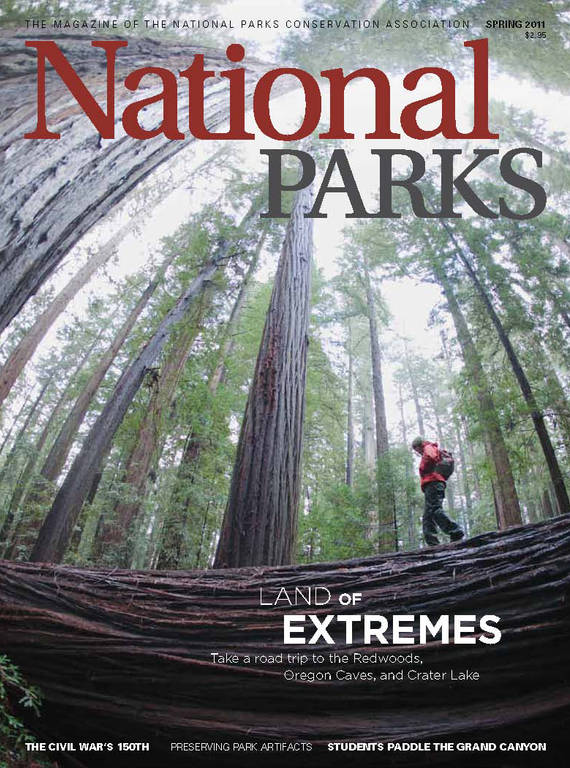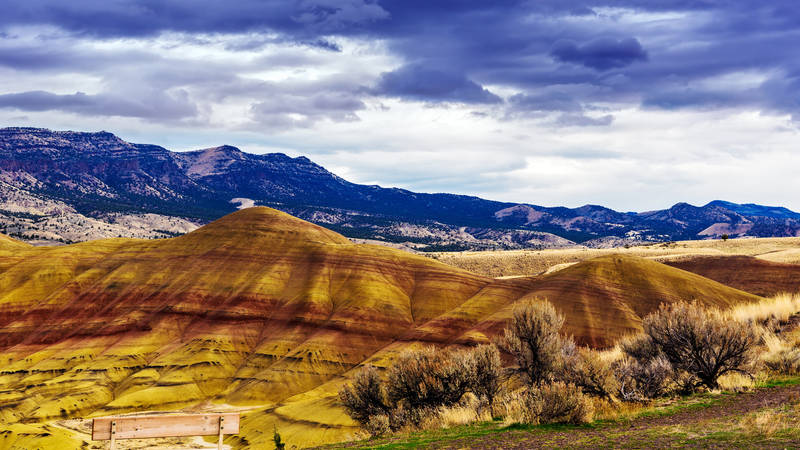Spring 2011
Fourth Rock from the Sun
Can Lassen Volcanic National Park help NASA learn about life on Mars?
Five thirty-three a.m. Earth Time. From 92 million miles away, the sun sends a hazy pink light streaking through the atmosphere. Fumaroles hiss volcanic gases and steam at 322 degrees Fahrenheit. Mudpots rumble and thump. Acidic pools boil. California’s Lassen Volcanic National Park can seem as alien as another planet. And it is exactly this out-of-this-world mystique that has led NASA scientists here in a search for clues to an age-old question: Could there be life on Mars?
The fourth planet from the sun and the Earth’s nearest neighbor, Mars has long sparked the human imagination. Its red glow, clearly visible with the naked eye, was an ominous omen of battle and disaster, leading the Romans to name it after their god of war. As early as the 1880s, telescopes revealed strange linear markings on its surface fueling speculation of alien civilizations, a fear played upon in the famous 1938 Orson Welles radio broadcast “War of the Worlds.” Close-up photographs taken by Mariner 4 in 1965 dispelled the myth of glittering Martian cities but began revealing a planet intriguing in its own right: ice caps at both its poles; the largest mountain in the solar system (Olympus Mons is nearly four times as high as Mount McKinley); a canyon system four miles deeper and six times longer than the Grand Canyon; sand dunes rivaling any in our National Park System.
Most intriguing, however, may be the “erosional” features—extinct riverbeds, streamlined islands, flashflood debris fields, and immense dry lakebeds—sculpted landforms that hint at a time, perhaps billions of years ago, when water flowed across the Martian landscape. That water, combined with the geothermal energy that once fired the many extinct volcanic and hydrothermal features documented, could have given the Red Planet two of the main ingredients required for life: water and warmth. The prospect continues to fuel speculation that some form of life existed, or may still exist, on Mars.
But finding evidence of that life on a planet with twice the combined landmass of Earth, a toxic atmosphere, and an average temperature of -81⁰ Fahrenheit, presents scientists with a serious challenge. To narrow the target, NASA has adopted a “follow the water” strategy: Where there is or once was water, there may be signs of life, if only you know where to look. Enter Lassen Volcanic National Park.
“We are following the water at Mount Lassen in environments that could well be very similar to what once existed on Mars,” says David Des Marais, principal investigator with the Ames Research Center of the NASA Astrobiology Institute. Set at the southern end of the Cascade chain, Lassen Volcanic is a park sculpted by violent volcanic activity dating back as far as 600,000 years and as recently as 1917. Even today the prodigious amount of precipitation that falls atop the park’s high country percolates down to the still-hot molten rock that lies five to six miles beneath the park, then rises back to the surface as roaring fumaroles, gurgling mudpots, and boiling pools—a proving ground for life forms.

National Parks
You can read this and other stories about history, nature, culture, art, conservation, travel, science and more in National Parks magazine. Your tax-deductible membership donation of $25 or more entitles…
See more ›Beginning at Ridge Lake in the park’s higher elevations, Des Marais and his team, including a cadre of volunteers from the science class at nearby Red Bluff High School, take water samples from various elevations in the West Sulphur Creek watershed down to the popular Sulphur Works geothermal area. “At each site,” says Des Marais, “we record the water temperature, test the pH, and see how the composition of the water changes as it flows through the system.” Using an instrument called a “CheMin,” a version of which will be included on the 2012 Mars Science Laboratory mission, they also examine minerals on the spot to see how the water and the rocks are interacting in these extreme conditions. Other members of the team test for the presence of thermophilic bacteria, which have been found surviving in water as hot as 175 degrees Fahrenheit and may be one of the earliest life forms on Earth—or any planet.
“If Mars was a volcanic landscape billions of years ago,” says Des Marais, “and if water was free flowing on the surface and coming up from below, these same processes that are occurring here at Lassen would have been taking place on Mars. Studying the interaction of this triad of geology, water, and life here at Mount Lassen gives us the best indication of where to look and what to look for on Mars.”
With just one field season of this “follow the water” strategy behind them, it is too early to know what clues to extraterrestrial life might be uncovered. But Des Marais says that the information collected at Mount Lassen will become part of a database shared by NASA scientists, inching us a little closer to answering the ancient question: Are we alone?
About the author
-
 Jeff Rennicke
Jeff RennickeJeff Rennicke teaches literature at the Conserve School in Wisconsin’s North Woods.



